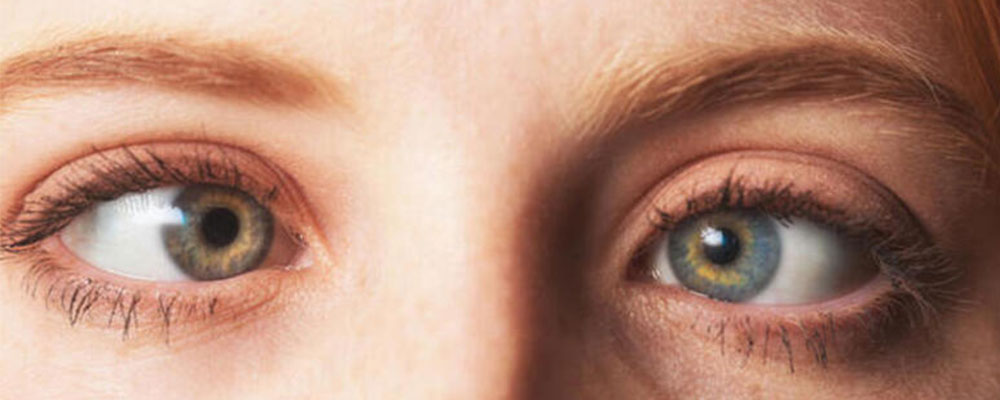
What is Strabismus?
Strabismus is the condition in which both eyes cannot look in the same direction and cannot move in the same direction. While one eye looks straight, the other eye may wander inwards, outwards, upwards or downwards. This condition is called strabismus. Strabismus is also called eye misalignment in society.
How Frequently Is Strabismus Seen in the Society?
Strabismus is seen in approximately 2 out of every 100 people in our society. This rate includes latent strabismus and strabismus that is being treated.
Strabismus Types
Apart from the obvious strabismus seen in children and adults, there are also diseases called strabismus.
False Strabismus: Due to the flattened nose root, facial asymmetry, and eyelid anomalies, it can be observed as if there is a deviation even though there is no real strabismus. This condition is called false strabismus.
Latent Strabismus: Latent strabismus is the strabismus that occurs when one of the eyes is closed. Latent slippage occurs quite frequently in society. When both eyes are open, the brain ensures that the eyes remain parallel with an associative mechanism. However, when one of the eyes is closed, this mechanism is disrupted and misalignment occurs in the closed eye. The patient is usually unaware of the shift and presents with complaints such as feeling of tiredness in the eyes, redness, pain, feeling of dryness and headache. If the patient also has a visual defect, these complaints appear earlier. The patient complains of headache, especially after close reading. Latent strabismus can be treated with appropriate glasses and orthoptic exercises.
Why Does Strabismus Occur?
Strabismus is caused by problems in the functioning of the eye muscles or problems in the brain centers that manage these muscles. These reasons may be related to hereditary diseases, or they may occur due to reasons such as not using glasses even though they are needed or lazy eye.
Strabismus in adults is mostly caused by inadequate treatment of strabismus that occurred in childhood. However, diseases such as brain and nerve palsies, diabetes and blood pressure (hypertension) can cause strabismus in adults. In addition, a specialist ophthalmologist should be consulted as strabismus may manifest itself in cataracts, eye tumors or neurological diseases.
Symptoms of Strabismus
Misalignment in one eye is the most important symptom of strabismus. A child with strabismus may tilt his head to one side to use both eyes together, and may experience discomfort such as sensitivity to light, closing one eye while reading, double vision, headache and fatigue.
Why Should Strabismus Be Treated?
It is a common misconception that strabismus in infancy will correct itself over time as the child grows up, but this is erroneous and strabismus never corrects itself by growing up. However, in cases of what we call false strabismus in children, where the root of the nose is wide and causes the appearance of misalignment even though there is no deviation, the appearance of misalignment improves over time with the development of the nasal bone, which wrongly suggests that the misalignment has corrected.
The aim of strabismus treatment is to eliminate the risk of amblyopia, increase visual acuity, correct abnormal head position and double vision, if any, ensure free eye movements, eliminate the disorder in the person’s external appearance, and most importantly, restore depth perception in the person’s vision.
Is Early Treatment of Strabismus Important?
As amblyopia develops in the floating eye, both vision is reduced and the sense of depth (three-dimensional vision) is reduced. Strabismus amblyopia should be treated until the age of 6-7. Because; Unfortunately, after these ages, treatments may not be as effective as desired. The earlier strabismus treatment is performed, the higher its success. However, in adult strabismus or in adults who have not received treatment before, surgical treatment can improve peripheral vision.
How to Treat Strabismus?
In the treatment of strabismus, accompanying diseases such as eye disorders (refractive error: hyperopia, astigmatism, myopia) and amblyopia, if any, should be treated first. With these methods, strabismus can often be corrected without the need for surgery. In addition, special eye exercises to strengthen the eye muscles and increase their working skills may help the treatment. In cases where all these are insufficient, or in some cases, surgical treatment may be required as the first treatment.
Strabotomy
Strabismus surgery is based on strengthening the eye muscles or weakening their overwork. After the surgery, glasses, amblyopia treatment or eye exercises may be required for the success of the treatment. Surgical intervention is not performed with laser, the position of the eye is rearranged by changing the location of the muscles around the eye.
Create an Appointment Online
